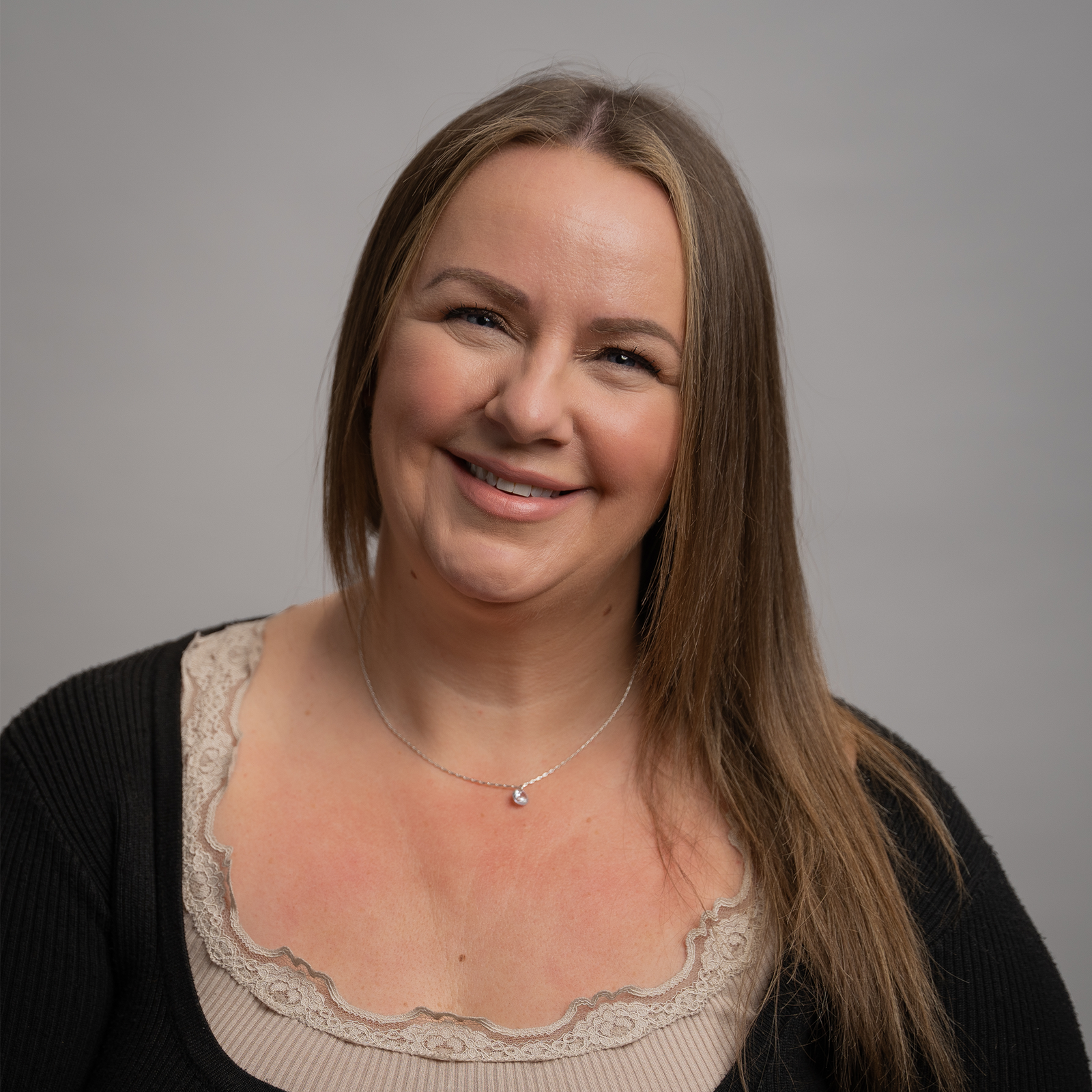


Written by Emily Cross.
19 minute read
We all grieve differently, and every way is valid. But you might find one approach speaks to who you are and how you want to move through your own healing.
Many people find that grief and grieving become slightly more manageable when they reflect on the concept of growing around grief. Doing so allows you to be kind and understanding with yourself at a time when you may feel caught between constant grief and the need to continue with other areas of life.
As providers of direct cremation services that are designed to help every family grieve and pay their respects in their own way, we have had the honour of talking with people who are taking all manner of different approaches to healing. We have used this to frame our guide on growing around grief, and hope it may provide some degree of comfort to you at this understandably difficult time.
Key takeaways:

If you have never heard the term ‘grow around grief’ before, you may be curious to know a little more about it. If you are struggling to figure out what to do when someone dies, the idea we are about to introduce you to may provide something you can anchor yourself to.
By considering grief as an ongoing, lifelong process, rather than a full ‘recovery’, Tonkin’s Model of Grief illustrates that the expansion of life around grief is possible in many cases. Grief then becomes something that remains largely the same over the course of your life, but also something that doesn’t stop other areas from growing around it and eventually flourishing.
You may find it helps to think about it as the coexistence of pain, healing, adaptation, and emotional growth. New experiences, people, and memories will move into your life and expand your life, even though the grief you are feeling right now will always be present in your life. Far from feeling guilty for this type of continuation of enjoyment, the model suggests that you can see it as a natural part of your own life journey.
The growing around grief model may be helpful if you are struggling to figure out how to cope with the death of a parent or someone else very close to you. Taking a look at it in a little more detail may help you to gain a new perspective on the way you feel right now and the way your feelings and emotions may evolve in the weeks and months ahead.
You may feel that mourning and remembering a loved one is such a personal and profound thing to have to do that following a prescribed model is too prescriptive. While we completely understand why you may feel that way right now, you may find that a short period of reading and reflection really helps you gain a new perspective on things.
The model began with the pioneering work of Margaret Stroebe and Henk Schut whose Dual Process Model served as the starting point. Their idea was that everyone jumps between two distinct types of coping: restoration-oriented and loss-oriented. Moving between trying to restore elements of normal daily life and all-consuming life, they said, was a natural way to try and adapt to a new situation in the light of profound grief and emotional shock.
Loss-oriented coping would focus on the physical absence of the person who has died and the fact that they are no longer there. It typically includes a deep desire to see them one more time, wishing things were different, and some resistance to moving forward in other areas of life. By comparison, restoration-oriented coping is more focused on looking ahead to the future. Accepting that there is more life to live and that new roles and relationships will emerge is central to this coping strategy. Many people report finding a new meaning in life when they occupy this state of mind.
As scientific understanding evolved, Tonkin’s Model emerged and described grief as remaining present while life gradually expands around it. Thinking of this model much like you would the process of frying an egg may help. When the egg initially hits the pan, all you see is the yolk (your grief), and the white is transparent. Over time, the white emerges around the yolk while the yolk’s size remains unchanged. The white represents the rest of your life and the fact that things continue to grow, move, and evolve even though you are forced to carry a profound sense of grief with you for the rest of your life.
Tonkin’s model of grief is something that many people who are trying to figure out how to deal with grief find comforting, and it may be able to deliver the same sense of support and guidance for you.
The key point is that the grief you are experiencing right now does not shrink but becomes a smaller part of a growing life — your life grows around it and gives you new ways to find enjoyment and happiness. Accepting the fact that your grief may always be with you, and then going ahead with the rest of your life in the way that the person who has died may have wanted you to, may feel difficult.
You may find that thinking about following the model as a form of personal growth and transformation helps you move forward. Rather than turning your back on the person who has died or trying to forget them, you are, in a way, honouring their memory by continuing to live the full and free life they would have wanted for you. Reframing grief and what comes next in this way is something that many people find empowering and reassuring.
Growing around grief is such a personal thing that it may be hard to know where to start. Some find that they want to hold onto one of the suggestions in our guide to symbols of grief, but others find that actions, rather than symbolism, make them feel more comfortable. Going back a step and looking at the bigger picture may help you at this point.
The Tonkin Model of Grief may help those who are remembering a friend who has died by showing them that they are resilient enough to adapt in the face of the grief they are currently experiencing. Resilience is the ability to keep moving forward while carrying and sitting with your grief, and it is a sign of emotional strength and clarity, but that’s not to say that those who appear to be struggling more on the surface are coping any less well. We all move forward in our own way and at our own pace, and this is something we should never be judged for.
Emotional healing rarely follows a straight line—it can rise and fall, stall and shift without warning. You probably won’t feel a little bit better every single day, but over time, you may notice that something has shifted. That you’re not where you were.
Being able to lean on others during this period can be invaluable, especially if you’re someone who tends to retreat when overwhelmed. Talking, being with people, or simply sitting in someone’s company might help you make sense of what you’re feeling. It won’t fix everything, but it might help you start understanding your new reality and begin to find ways through it.
Tonkin’s grief model is something you may also find empowering in the sense that it focuses on maintaining an emotional bond with the person who has died. Some may feel that the idea of life growing around grief minimises or dismisses how they are feeling, but this is never the intention. Instead, the model is focused on promoting ways to honour the memory of your loved one while continuing to grow in your own way.
Finding meaning in your new habits and rituals that you have adopted to remember your loved one is something that you may find makes a real difference to your long-term emotional health. Creating a charity event, maintaining part of a memorial garden, or even just making it your business to reach out to others in your social circle and check they are okay may all help.
Continuing to search for meaning in this way may help add some renewed purpose and direction to your life at a time when you may feel that your main point of focus has suddenly gone. Many people find that connecting with some of the comforting books about death that have been written by thoughtful, reflective writers over the years can really help with this as well.
Tonkin’s grief model is more of a prescriptive approach than you may have thought about before. While many of us have naturally turned to things like comforting grief and loss quotes and poems, following a model may feel slightly robotic, even overwhelming. It’s understandable to feel this way, but giving yourself a little more time and space to consider the potential benefits may help.
Finding a new daily habit, ritual, or practice that you feel about to work your way through more often than not may provide you with a new point of focus in your life. Grief can feel all-consuming, but it’s being able to find other reasons to continue moving forward that the model we are describing really focuses on. If you are unsure about how to structure such a habit, you may find it helpful to consider some of the following suggestions:
Some also find great comfort in seeking professional support via local support groups or by contacting services such as Cruse Bereavement Support. If you find that opening up and talking to someone outside of your friendship circle and immediate family helps, you may find that scheduling a regular appointment adds some welcome structure to your week.
The environment you find yourself in is not always the environment you would choose, and there is no shame in admitting that. For example, someone who is struggling to figure out how to cope with the suicide of a loved one or partner may feel, on some level, that they have had their new environment and reality forced upon them. As a family-run funeral provider who cares about providing help in any way we can, we want you to know that:
Your environment may begin at home, but you have the option to shape it however you wish, both behind your front door and outside in the rest of the world. When you feel emotionally able to connect and open up, you may find that a great deal of comfort can be derived from talking to someone you care about at least once a day. If they are also grieving the same death, you may also have days when you are able to comfort them and lift them up. These types of experiences will then bring the two of you closer together and may also feel deeply empowering.
Let’s consider the first birthday after the death of a loved one for a moment. Does the model we have talked about try and push you to forget about such an occasion and carry on as normal regardless? No, and this is one of the common misconceptions about this approach.
Growth, in this context, does not mean forgetting or ‘getting over’ loss — it’s about continuing to evolve in other ways and aiming to find enjoyment and purpose in other areas of life. Your grief will be with you as you make your way through the rest of your life, and there is nothing wrong with this. Grief stays with you and, in many ways, is the price we pay for having loved someone who dies, but if you want to continue finding enjoyment in other activities, places, and relationships, you can give yourself permission to do so.
While all of this sounds positive and forward-looking, you may be left feeling some pressure if you don’t find yourself immediately growing with grief. There are no time limits on grief or expectations for recovery — everyone is different — and listening to yourself and understanding yourself is how we would suggest moving forward at this time. You may find that you can gently ease yourself into the growth phase by starting a single daily habit of just a couple of minutes. Sit with it, see if you derive some sense of purpose from it, and then see where it takes you if you wish to apply the model.
If we accept that healing includes both pain and transformation, we may find that we can be kinder to ourselves on those days when we feel like we have gone backwards. We may also be able to avoid the guilt that many mourners feel when they notice themselves feeling happy or enjoying an activity without their loved one.
Grief counsellors, psychologists, and therapists are professionals who work to guide individuals through adaptation and the various emotional stages that come with it. You may find that seeking professional help allows you to open up to someone in a way that you don’t feel comfortable with within your friendship group or immediate family. You may also find that the clarity and direction a professional can provide helps you maintain perspective as you navigate a complex range of feelings and emotions.
Prolonged grief is something that may feel like it will never go away, and many people actually find that to be the case, but they also find ways to enjoy other aspects of life. Being able to share your experiences, thoughts, and feelings with a professional in a private and discreet setting may help you to gain clarity about the nature of the journey you are currently on.
You may find yourself feeling like you have someone ‘failed’ if you so much as consider seeking professional help, but this is certainly not the case. We can tell you with absolute certainty that having the courage and bravery to reach out and ask for help at a time of profound grief is one of the most incredible things you can do. It may prove to be the first step on a new approach to emotionally healthy growth that allows you to live the rest of your life in a way that honours the memory of your loved one.
Every grief journey is personal and different and equally valid. Cultural differences, religious differences, and different world views will all contribute to the way we grieve and heal on an emotional level. If you feel that you want to try growing around grief, this is your decision. Others close to you may not understand it, possibly even feel sceptical of it, but this is a personal journey that you have every right to take control of.
When you grieve, you rarely do so in isolation. The death of a friend, partner, or relative will likely impact the lives of dozens of others, many of whom you will know personally. This is why the importance of self-compassion and patience with respect to the healing process is impossible to overstate. Seeing someone you know appear, at least on the surface, to be recovering faster may feel deflating. Likewise, finding a way to grow around grief only to get the impression that others are judging you for moving on ‘too quickly’ may be hurtful. Recognising that you have the right to heal in your own way — as does everyone else who is mourning your loved one — may help you to maintain balance and perspective in life.
Even if you open up about the ways you are attempting to grow around grief and the person you are talking to decides it is not an approach for them, your journey is still valid. Navigate it in a way you feel is sustainable and realistic, and you will be able to honour the memory of your loved one in the way you wish.
We believe in being here for you no matter how you are feeling or what part of your healing journey you are currently on. Although you may think that we focus mainly on practical matters, we know from experience that the emotional side of things is just as, if not more, important.
We are here to help in every way we can, and that includes guiding you through ways to pay your respects and to help those close to you. If you have found yourself reflecting on your own legacy, our *pre-paid funeral plans may provide some peace of mind, while our guide in which we *compare funeral plans may help you understand your options. And if you feel like all of this is too much to consider right now, by all means, put it to one side until you feel emotionally ready.
The most important thing for us is to know that you are getting the help, support, and comfort that you need at a time when you really need it. Everyone on our team takes a kind and compassionate approach to what they do and is always available to provide help and assistance. We feel it’s the least we can do when you reach out for help and put your trust in us
*Terms and conditions apply. You will receive a funeral plan summary before purchase.



Understanding grief as something that stays with us throughout the rest of life and doesn’t fade is a new way of considering your healing journey. The idea is that the grief may remain, but other areas of your life grow and expand around it — you are continuing to move forward while still thinking about what the person who has died means to you.
Growing after losing someone you love may feel like it is right near the bottom of your list of priorities right now, but it is also something that may allow you to enjoy balance in your life again. Finding purpose in the small things and adopting even just one tiny daily habit may help you anchor yourself to something during a time of emotional turmoil and uncertainty.
In our experience, trying to exercise self-compassion is one of the most effective things you can do at a time when so much in life may understandably feel like it is out of your control. Being kind to yourself, trying to give yourself space to reflect, and understanding that your feelings may change from one hour to the next can all help you to cope with long-term grief.
It is possible to heal while you are still grieving, and, in fact, many people find that grieving is a process that never really ends. That said, many of these people also report being able to find meaning and purpose in other areas of life, so that they can feel like they are growing in new directions and experiencing new things.
Many people find that this approach frees them of the expectation that they have to completely shut down when someone they love dies. Others may decide that they prefer a different approach, and there is certainly nothing wrong with that. The key point is that we all have the freedom to choose how we move forward and how we come to terms with what has happened in our lives. If you find you naturally resonate with the concept of growing with grief, you may find that it helps to run with the concept without thinking about it too deeply at first.
staging site last replicated: MISSINGNO.